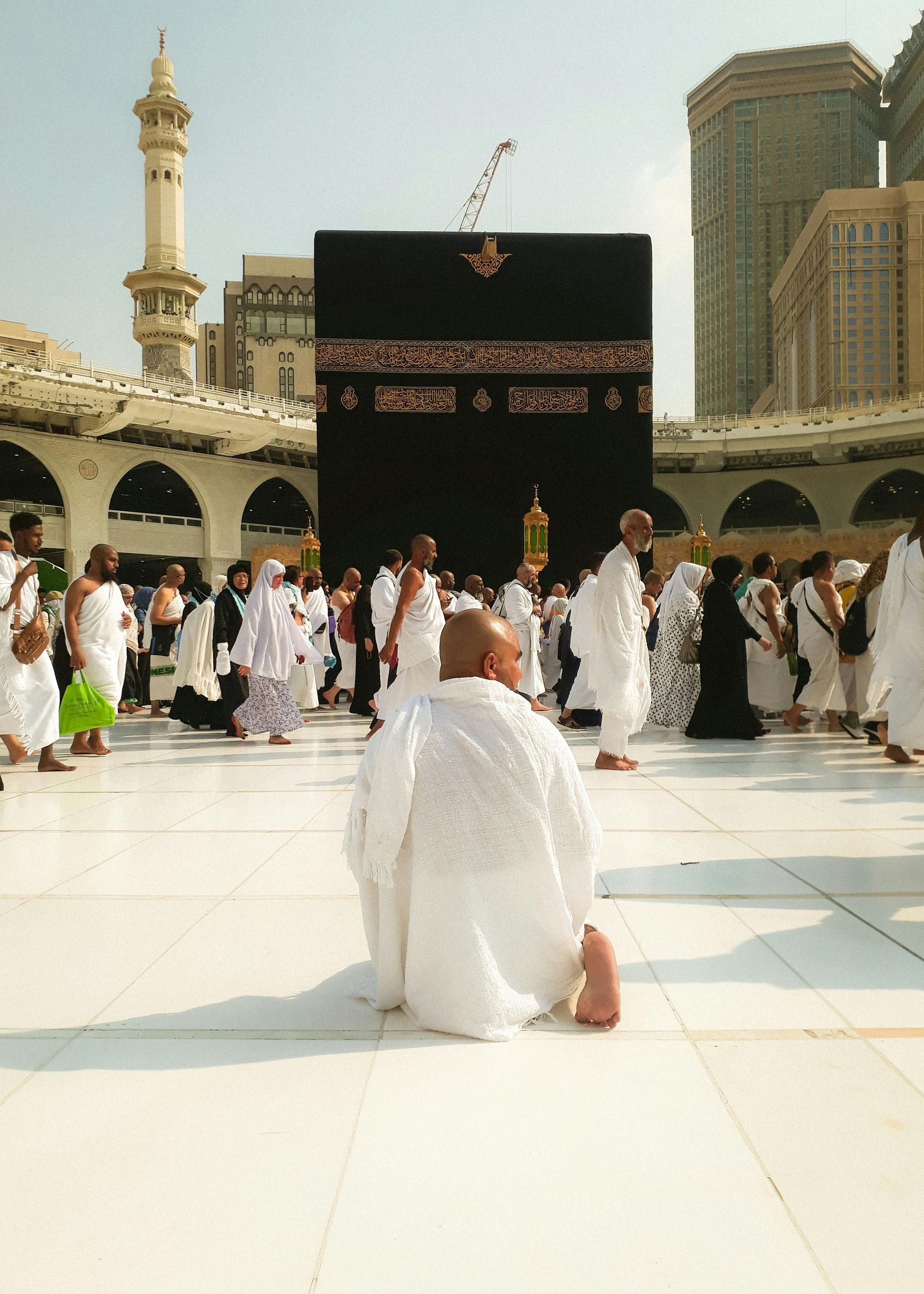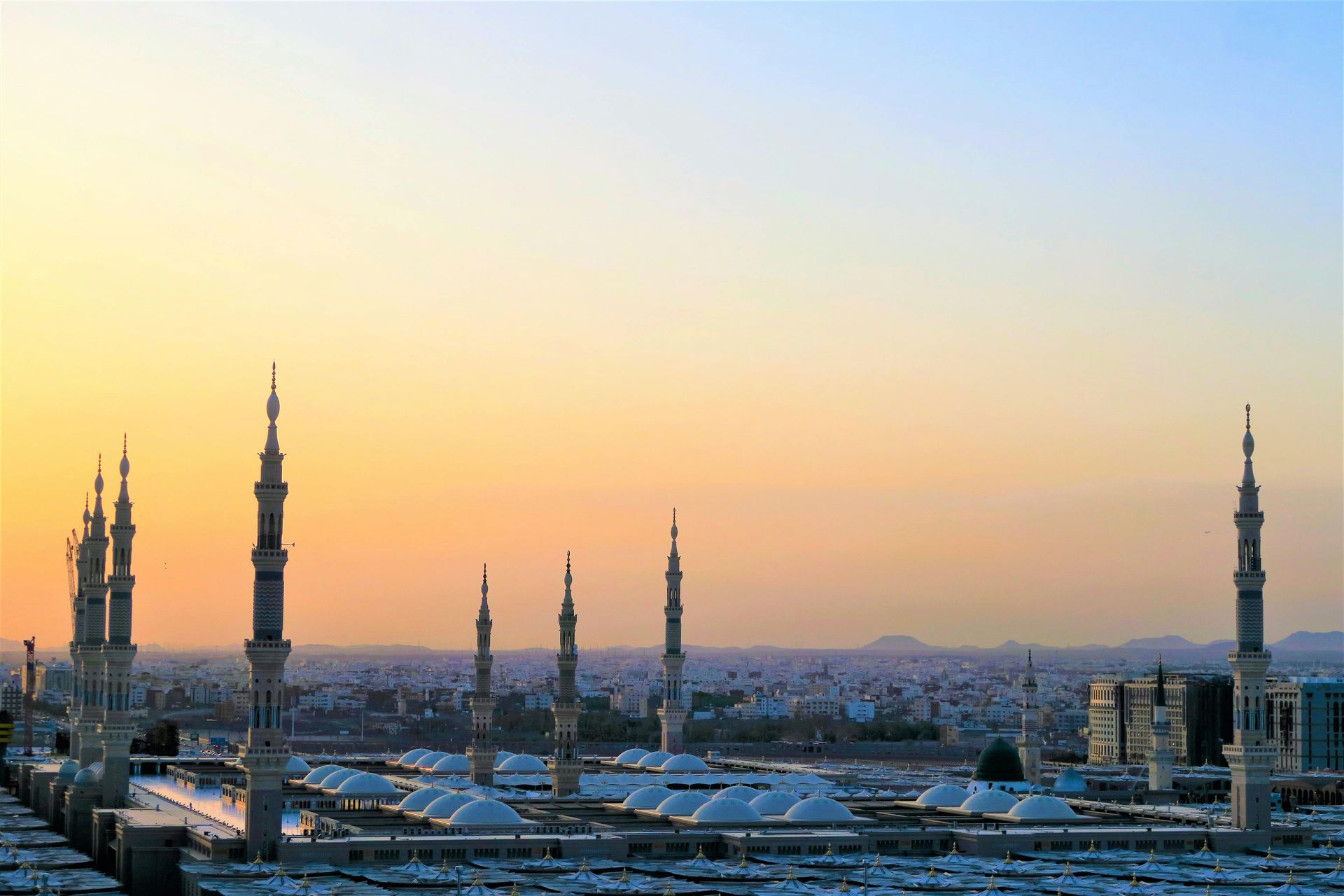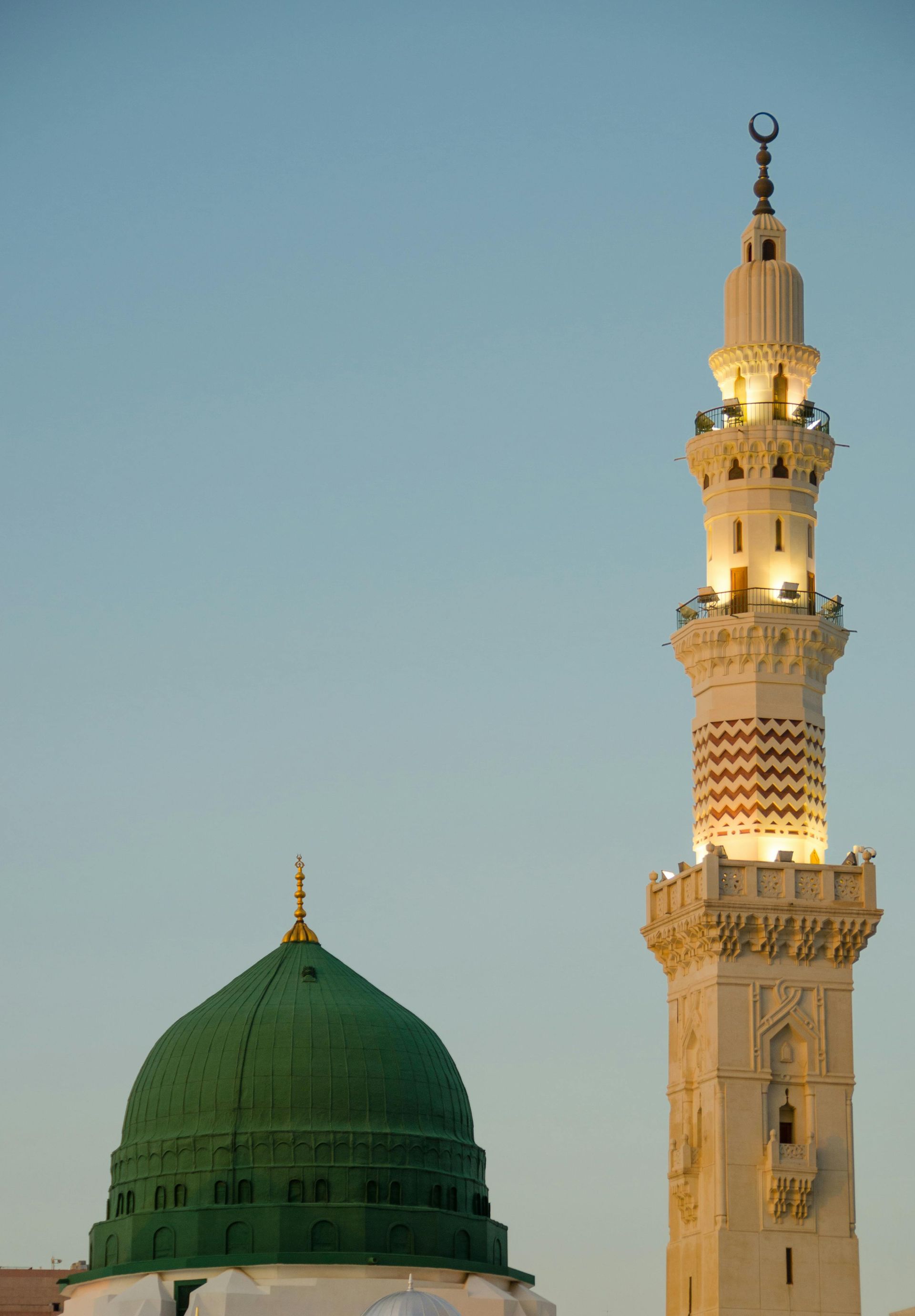Our Lowest Accommodation Prices Guaranteed
Makkah & Madina
Makkah & Madinah. Embark on Your Sacred Journey of Hajj & Umrah
Fulfilling Your Spiritual Obligation with Peace of Mind
In the heart of the Arabian Peninsula lie two cities unlike any other on Earth: Makkah al-Mukarramah (Makkah the Honoured) and Madinah al-Munawwarah (Madinah the Radiant). For Muslims across the globe, these blessed cities represent the spiritual epicentre of their faith. Makkah, the birthplace of Prophet Muhammad (Peace Be Upon Him) and home to the Kaaba – the House of Allah (God) towards which all Muslims pray – and Madinah, the city that welcomed the Prophet (PBUH), where he established the first Muslim community, and where he is laid to rest.
To embark on a journey to Makkah and Madinah is to answer a divine call, stepping onto sacred ground imbued with centuries of prayer, devotion, and profound Islamic history. It is a pilgrimage undertaken with the intention of fulfilling the sacred rites of Hajj or seeking spiritual closeness through Umrah. This is not merely travel; it is a deeply personal and communal act of worship, a journey that promises spiritual purification, connection, and an unforgettable experience of unity with millions of fellow believers from every corner of the globe, standing shoulder-to-shoulder in devotion to the One God.
Why Embark on This Sacred Journey?
The reasons for undertaking the pilgrimage to Makkah and Madinah are deeply rooted in faith and spiritual aspiration. For those who are physically and financially able, performing Hajj is a fundamental pillar of Islam, an obligatory act of worship that carries immense reward and significance, commemorating the trials and devotion of Prophet Ibrahim (Abraham), his wife Hajar, and his son Isma'il (Ishmael) (Peace Be Upon Them All). Completing the Hajj is believed to cleanse past sins and represents a pinnacle of spiritual achievement in a Muslim's life.
Both Hajj and the voluntary pilgrimage of Umrah are profound opportunities for seeking spiritual purification and closeness to Allah. Pilgrims travel with hearts full of hope, seeking forgiveness, praying for their needs and the needs of others, strengthening their faith, and striving to return home spiritually rejuvenated. It is a chance to disconnect from worldly distractions and focus entirely on worship and reflection in the most sacred places on Earth.
This journey allows you to walk, literally, in the footsteps of Prophets. Performing Tawaf around the Kaaba, Sa'i between the hills of Safa and Marwa, praying in Masjid al-Haram in Makkah and Al-Masjid an-Nabawi (The Prophet's Mosque) in Madinah connects you directly to pivotal moments and figures in Islamic history, most notably the final Prophet, Muhammad (PBUH). The sense of history and divine presence is palpable.
Furthermore, the pilgrimage is an unparalleled
experience of global Muslim unity (Ummah). Witnessing millions of people from diverse backgrounds, languages, and cultures united in worship, wearing simple garments (Ihram during Hajj/Umrah), and performing the same rituals is a powerful testament to the brotherhood and sisterhood in Islam. Visiting and praying in the sacred mosques – Masjid al-Haram and Al-Masjid an-Nabawi – carries immense spiritual rewards, far exceeding prayers offered elsewhere. Ultimately, for many, this sacred journey is a life-changing experience, fostering patience, humility, gratitude, and a renewed commitment to faith that resonates long after returning home.
Key Aspects of Your Pilgrimage
Perform Tawaf around the Kaaba (Makkah)
The heart of both Hajj and Umrah is the Tawaf, circling the sacred Kaaba anticlockwise seven times within Masjid al-Haram. This profound act of worship signifies the unity of God and the pilgrims' devotion, orbiting the symbolic House of Allah as angels orbit His throne.
Perform Sa'i between Safa and Marwa (Makkah)
Pilgrims walk and hasten seven times between the small hills of Safa and Marwa, located within the Masjid al-Haram complex. This ritual commemorates the desperate search for water by Hajar (wife of Prophet Ibrahim, PBUH) for her infant son Isma'il (PBUH), demonstrating faith and reliance on God.
Visit & Pray in Al-Masjid an-Nabawi (Madinah)
Travel to Madinah holds immense significance. Pilgrims visit the Prophet's Mosque to pray, send salutations (Salawat) upon Prophet Muhammad (PBUH) at his blessed tomb, and strive to pray within the Rawdah ash-Sharifah (Noble Garden), a small area considered رياض من رياض الجنة (a garden from the gardens of Paradise).
Visit Key Historical Sites (Ziyarah)
While in Madinah, pilgrims often undertake Ziyarah (visitations) to significant sites reflecting Islamic history. These include Quba Mosque (the first mosque built in Islam), Masjid al-Qiblatayn (where the direction of prayer was changed from Jerusalem to Makkah), and Mount Uhud (site of a major battle). In Makkah, some may visit sites like Jabal al-Nour (location of the Cave of Hira where the Prophet PBUH received first revelation) or Jabal Thawr usually with organised groups and focusing on reflection.
Perform the Core Rites of Hajj
Beyond Tawaf and Sa'i, Hajj involves a sequence of vital rituals performed over several days at specific locations outside Makkah. These include travelling to Mina, the Day of Arafat (Waquf - standing in prayer and supplication on the plains of Arafat, the pinnacle of Hajj), staying overnight in Muzdalifah, performing the symbolic stoning of the pillars (Ramy al-Jamarat) in Mina, sacrificing an animal (Qurbani/Hady), and shaving or trimming the hair.
Accommodation Offers
Useful information
Local time
Saudi Arabia operates on Saudi Arabia Standard Time (AST), which is UTC+3. Currently (as of April 7, 2025), this is 2 hours ahead of the UK (BST, UTC+1).
Currency
The local currency is the Saudi Riyal (SAR).
Language
The official language is Arabic. Due to the international nature of the pilgrimage, English is widely understood in the holy cities, especially by those involved in Hajj/Umrah services. Languages like Urdu, Hindi, Bengali, Malay, and French are also commonly heard.
Location
Makkah and Madinah are located in the Hejaz region of Western Saudi Arabia, in the Middle East.
Entry Restrictions
Entry into the sacred cities of Makkah and the central Haram area of Madinah is strictly permitted for Muslims only. This is mandated by Saudi law based on Quranic injunctions.
Visa information
This is crucial: You cannot perform Hajj or Umrah on a standard tourist visa. You must obtain a specific Hajj Visa or Umrah Visa in advance through an approved travel agent licensed by the Saudi Ministry of Hajj and Umrah. Applications involve specific documentation and processes.
Flight time
Direct flights from the UK to Jeddah (King Abdulaziz International Airport - JED, the main gateway for Makkah) or Madinah (Prince Mohammad bin Abdulaziz International Airport - MED) typically take around 6 to 7 hours. Pilgrims often fly into one city and depart from the other.
Come and explore Makkah & Medina
Embarking on the sacred journey of Hajj or Umrah is one of the most significant events in a Muslim's life. It requires careful planning, logistical arrangements, and spiritual preparation. The focus should be on your devotion, not on travel complexities.
Tripsync Travel understands the profound importance and unique requirements of this sacred journey. As an approved agent licensed to arrange Hajj and Umrah packages, we specialise in providing comprehensive, seamless, and spiritually supportive travel experiences. We handle the visas, flights, accommodation near the Haramain (Holy Mosques), ground transportation, and provide guidance to ensure your pilgrimage is as smooth and spiritually rewarding as possible.
Answer the call. Let Tripsync Travel assist you in planning your blessed journey to Makkah and Madinah with care, expertise, and reverence. Contact us today to discuss our approved Hajj and Umrah packages.





